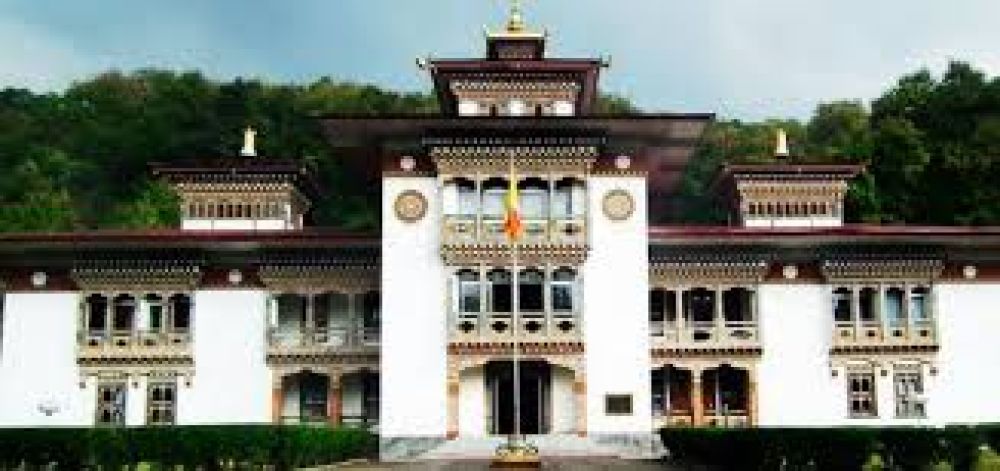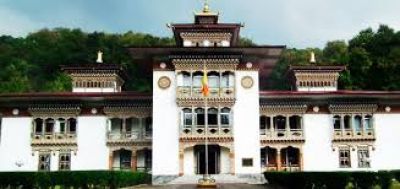

The Samdrup Jongkhar Dzong presents a remarkable opportunity to delve into the rich cultural heritage of Bhutan. This ancient fortress-like structure, though smaller than some of its counterparts in other regions, stands as an eminent symbol of Bhutanese architectural ingenuity. A guided tour of the Dzong introduces visitors to its historical significance, the religious importance, and the administrative functions it serves in the present day. As one traverses the courtyards and halls, the Dzong's intricate woodwork, elaborate paintings, and serene atmosphere offer a window into Bhutanese traditions. Marvel at the murals depicting Buddhist teachings and the life of Buddha. The Dzong is also an active monastic center, housing monks who maintain daily rituals and practices. The tour will usually end with a panoramic view of the town from the Dzong's upper reaches, an experience that is as tranquil as it is picturesque.
The Mithun Breeding Farm, located just beyond the outskirts of Samdrup Jongkhar town, is an engaging excursion for those interested in agriculture and animal husbandry. Mithuns are bovine creatures, revered in the region for their strength and vitality and are often crossbred with local cows to produce high-quality offspring for both dairy and agricultural work. A visit to the breeding farm allows guests to gain insight into the unique techniques employed in the care and breeding of these animals. The tour includes a walk through the pastures, a demonstration of the breeding process, and an interaction with the farm staff to understand the significance of Mithuns in Bhutanese rural livelihoods. This activity provides an educational glimpse into Bhutan's efforts towards sustainable farming and rural development.
A spiritual sojourn awaits you at the Zangtopelri Lhakhang, a Buddhist temple beset amidst the serene environment of Samdrup Jongkhar. This tranquil place of worship is not just a religious site, but also a community hub for the locals. The temple's name, Zangtopelri, translates to the 'celestial abode of Guru Rinpoche', and is a representation of his paradise. Visitors are welcomed by the sound of prayer bells and the sight of fluttering prayer flags as they step into the temple grounds. Inside, the Lhakhang houses numerous statues and thangkas – traditional Buddhist paintings on cloth – depicting deities and significant moments in Buddhist lore. The detailed craftsmanship and the air of devotion that fills the temple can be a moving experience. The visit provides an encompassing glance at Buddhist spiritual practices while offering a peaceful retreat for personal reflection.
A visit to Samdrup Jongkhar's local market is a vibrant expedition into the colorful array of Bhutanese daily life. The market stalls brim with fresh produce, traditional textiles, handicrafts, and an assortment of local delicacies. Touring the marketplace offers an ideal opportunity for cultural interaction and learning about the locally grown fruits and vegetables, as well as spices unique to Bhutanese cuisine. The bustling ambiance and the friendly exchanges between vendors and shoppers are a testament to the community spirit prevalent in the town. Guests can try their hand at bargaining for souvenirs, sample authentic Bhutanese street food, or simply soak in the lively atmosphere. A market exploration is more than just a shopping trip; it's a cultural experience that tantalizes all the senses and offers a slice of local Bhutanese livelihoods.
The Dewathang Military Campus offers a unique insight into Bhutan's modern history, particularly the role it has played in the country's defense. The military campus holds historical significance as the site of the last battle for Bhutan against colonial British forces in the 19th century. Visitors can tour the grounds and learn about this pivotal moment in Bhutanese history from knowledgeable guides who provide a detailed narration of the events that transpired. Additionally, the beautifully kept campus with its well-maintained gardens and imposing structures gives one an understanding of the discipline and order characteristic of military life. Please note that permission is usually required to visit military sites, and visitors must comply with the campus rules and regulations during the tour.
For food enthusiasts looking to immerse themselves in Bhutanese culture, a traditional cooking class in Samdrup Jongkhar can be a fulfilling encounter. Under the guidance of a local chef, participants will learn how to prepare authentic Bhutanese dishes using fresh, locally sourced ingredients. The cooking class covers the preparation of staples like red rice, various vegetarian and meat curries, the iconic chili and cheese dish known as Ema Datshi, and the art of making momos (Bhutanese dumplings). As the class unfolds, the chef shares insights on the cultural significance and the nutritional benefits of the dishes being prepared. This activity is not merely about food; it is a culinary journey that allows for a deeper connection to Bhutan's gastronomic traditions and offers the satisfaction of enjoying a self-prepared Bhutanese meal.
For the adventurous at heart, the Drukpath offers a scenic hike through the pristine environment surrounding Samdrup Jongkhar. The trail is frequented by locals and thus remains well-tread and marked. Hikers can relish the lush greenery, the diverse flora, and occasional sightings of local wildlife. A well-paced trek will reveal hidden brooks, quaint bridges, and some of the best panoramic views of the region's rolling hills and valleys. The Drukpath is more than just a physical challenge; it is an opportunity to connect with nature and experience the tranquility of Bhutan's landscapes. The duration of the hike can vary depending on the chosen path and the pace of the hikers. It's advisable to have a guide accompany you for the best experience and to gain insight into the local ecology as well as cultural anecdotes.
A visit to Samdrup Jongkhar is incomplete without experiencing Bhutan’s national sport, archery. Visitors have the unique opportunity to witness or even participate in an archery tournament at one of the local grounds. The experience begins with an introduction to the traditional bamboo bows and arrows, followed by a demonstration of the Bhutanese archery techniques which have been refined over centuries. Observing a match is a spectacle in itself, as players often engage in friendly banter and humorous distractions to throw off their opponents. For those brave enough to try their hand at the sport, local archers are usually more than happy to provide basic coaching. This hands-on activity doesn't just test one's aim but also offers an authentic glimpse into Bhutanese culture and community spirit.
A monastic school visit in Samdrup Jongkhar allows for a profound encounter with the spiritual and educational aspects of Bhutanese society. Visitors are introduced to the life of the young monks who reside and study within the monastic premises. Guided tours offer an explanation of their daily routines, educational curricula, and the rituals they partake in. Observing their classes provides an understanding of how these institutions contribute to preserving and passing down Buddhist teachings across generations. Interacting with the monks-in-training, guests might find themselves engaged in philosophical discussions or witness the monks engaged in their daily debate practice, a critical part of their learning process. This visit is not only educational but also inspirational, revealing a different approach to education and spiritual growth.
The cultural performance evenings in Samdrup Jongkhar are a fantastic way to experience Bhutan's artistic heritage. The event typically unfolds in a local auditorium or an open-air stage where traditional dancers and musicians showcase folk dances, mask dances, and regional musical styles. The vibrant costumes, the rhythmic beats of the drum, and the soulful melodies of traditional instruments come together to narrate tales from Bhutanese folklore and history. An evening of cultural performances is not just entertainment; it's an active preservation of the nation's cultural identity and an unforgettable experience for visitors. Such events also offer an opportunity to mingle with locals and share in their pride for Bhutanese art forms.
